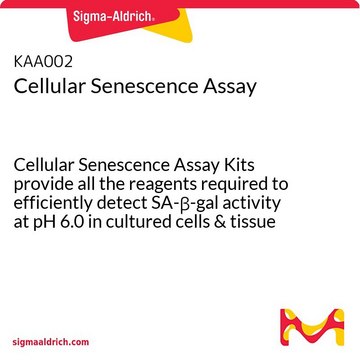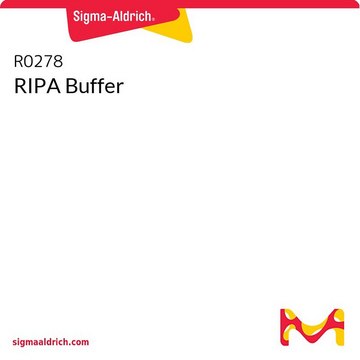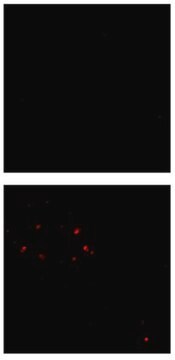MABN639
Anti-Beta (β)-Amyloid antibody
mouse monoclonal, 1E8
Sinonimo/i:
Amyloid beta A4 protein, ABPP, APPI, APP, Alzheimer disease amyloid protein, Cerebral vascular amyloid peptide, CVAP, PreA4, Protease nexin-II, PN-II
About This Item
Prodotti consigliati
Nome del prodotto
Anti-Amyloid βA4, clone 1E8 (Amino Terminus) Antibody, clone 1E8, 1 mg/mL, from mouse
Origine biologica
mouse
Livello qualitativo
Forma dell’anticorpo
affinity purified immunoglobulin
Tipo di anticorpo
primary antibodies
Clone
1E8, monoclonal
Purificato mediante
affinity chromatography
Reattività contro le specie
human
Concentrazione
1 mg/mL
tecniche
immunohistochemistry: suitable
immunoprecipitation (IP): suitable
western blot: suitable
Isotipo
IgG1κ
N° accesso UniProt
Condizioni di spedizione
wet ice
modifica post-traduzionali bersaglio
unmodified
Informazioni sul gene
human ... APP(351)
Descrizione generale
Specificità
Immunogeno
Applicazioni
Western Blotting Analysis: A representative lot was used to detect Amyloid βA4 in Western Blotting. (Wiltfang, et al. 2001; Serneels, et al. 2009; Maler, et al. 2007).
Immunoprecipitation Analysis: A representative lot was used to detect Amyloid βA4 in Immunoprecipitation. (Wiltfang, et al. 2001; Maler, et al. 2007).
Neuroscience
Neurodegenerative Diseases
Qualità
Western Blotting Analysis: A 1:1,000 dilution of this antibody detected Amyloid βA4 in human Alzheimer′s brain tissue lysate.
Descrizione del bersaglio
Stato fisico
Stoccaggio e stabilità
Avoid repeated freeze / thaw cycles.
Esclusione di responsabilità
Non trovi il prodotto giusto?
Prova il nostro Motore di ricerca dei prodotti.
Avvertenze
Danger
Indicazioni di pericolo
Consigli di prudenza
Classi di pericolo
Acute Tox. 3 Dermal - Acute Tox. 4 Inhalation - Acute Tox. 4 Oral - Aquatic Chronic 3
Codice della classe di stoccaggio
6.1C - Combustible acute toxic Cat.3 / toxic compounds or compounds which causing chronic effects
Classe di pericolosità dell'acqua (WGK)
WGK 1
Certificati d'analisi (COA)
Cerca il Certificati d'analisi (COA) digitando il numero di lotto/batch corrispondente. I numeri di lotto o di batch sono stampati sull'etichetta dei prodotti dopo la parola ‘Lotto’ o ‘Batch’.
Possiedi già questo prodotto?
I documenti relativi ai prodotti acquistati recentemente sono disponibili nell’Archivio dei documenti.
Il team dei nostri ricercatori vanta grande esperienza in tutte le aree della ricerca quali Life Science, scienza dei materiali, sintesi chimica, cromatografia, discipline analitiche, ecc..
Contatta l'Assistenza Tecnica.









